Let’s talk about e-bikes. You may have seen them up and down your local roads and started to feel that itch to get yourself one. If this is the case, hold tight, because there is a lot to know about these electric cruisers. Don’t make the mistake of thinking they are just one-trick ponies. In reality, they are quite diverse and versatile.
E-Bikes are sorted into Classes by throttle capabilities and speeds: Class 1 bikes have pedal assist, up to 20mph. Class 2 bikes add throttle control, up to 20mph. Class 3 bikes have pedal assist and throttle control up to 28 mph! Within classes, Type usually refers to the use case: mountain biking, commuting, etc.
If this all seems a bit confusing, we’ll make sure you’ve got the information you need by the end of this article. Understanding all the differences in e-bikes can help you better make an informed decision on what one is right for you. Ready to learn more about the different types of e-bikes? We’ve got all that information and more; just read on!
What do we mean by “Type” of E-Bike?
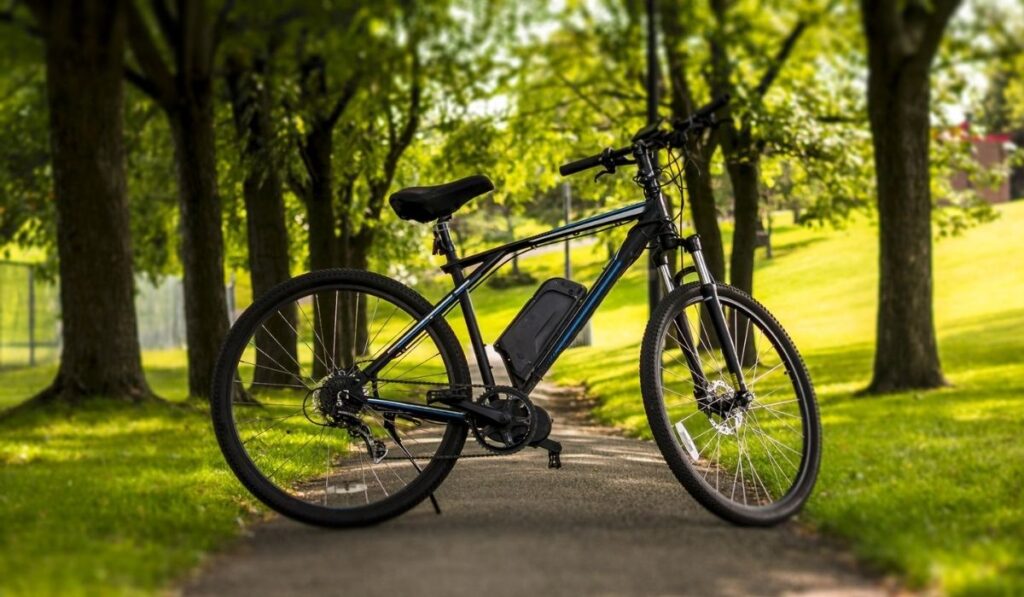
It can be a little strange for a non-cyclist to look at an e-bike and make a call on what “type” it is. I mean, it’s an e-bike, and they’re all pretty much the same, right? Most e-bikes are just a frame, some wheels, and of course, the motor. So what exactly do we mean when we say different types of e-bikes? Well, we are here to tell you.
E-bikes can be very different. This isn’t just about the style of the bike, but also how it delivers power and what features it has. With everything from commuter to mountain e-bikes, you’ve got plenty of choices to consider when it comes to buying the bike most right for you.
So what are some of the key differences between these bikes? Some go faster than others, and some are designed for different terrains. Knowing how you intend to ride your bike is always a great first step to deciding which type is most appropriate for you.
If you’re looking for a more casual experience, there are plenty of e-bikes to consider. Conversely, if you need the extra juice to speed down those country roads, well, you can find that too.
Let’s jump into the more detailed differences now, and hopefully, by the end of this article, you’ll know precisely which e-bike would be best suited to you.
Breaking Down E-Bikes by “Class”
Alright, the first thing you need to know is the class system. But, before we jump in, let’s talk about the general laws regulating e-bikes. In most areas, especially the U.S. and Europe, you can just tape a motor onto a bike and call it a day.
This can get dangerous, as you can probably imagine. So the class system exists to help regulate what kind of power e-bikes can utilize and how fast they can go.
It’s worth mentioning that this depends on your local laws more than anything. Unfortunately, there is no universal standard when it comes to e-bikes. Much like other cycling laws, some areas have thoughtful and robust legislation and others don’t have anything on the books.
If you are interested in knowing more, contact your local bike shop. They most likely know the ins and outs of what laws exist in your area. For now, let’s talk about the class system specifically.
Class 1
The first thing you need to know about the class system is that it’s not all about speed. Sure, top speed is an aspect of what is regulated, but for the most part, it’s about how the motor gives the wheels power. The main difference is between using throttle and pedal-assisted power.
For class 1, expect only to get a pedal-assist. If you’re not familiar, pedal-assist is when the motor only gives a little help to the pedals, with you still needing to do a decent amount of pedaling to get anywhere. For Class 1 e-bikes, max power is cut off at 20 mph. Any faster and the pedal-assist will turn off automatically, leaving you to do all the work.
If you’re wondering why anyone would want an e-bike without a throttle, you’re not alone. There ARE some people who ONLY want pedal-assist though. If you’re interested in more about this, check out our article discussing if pedal-assist bikes are really worth it in the end.
Class 2
With Class 2, things don’t get faster. As we said, it’s a mistake to think that they automatically jump in speed as the classes go up. For Class 2 e-bikes, the top speed available from motor power remains at 20 mph.
The difference between Class 1 and Class 2 is between the two modes we mentioned earlier. In this case, we’re talking throttle mode only. This means you won’t need to pedal to get power; the bike does all the work for you.
Class 3
Alright, now for Class 3. Remember how we said that top speed isn’t the main factor for the class system? Well, here is where things start to get a little faster. In the case of Class 3 e-bikes, you can expect a top speed of around 28 mph, making them a great choice for commuters.
But, before you start looking for Class 3 bikes, understand that they are strictly pedal-assist only. While this can be a downside for some, it still means you can travel faster than your average cyclist.
Breaking Down E-Bikes by Type or Use
Now that we’ve got the class system out of the way, you’re probably interested in looking into the different types of bikes by use. What do we mean by this? Well, you probably don’t want to be using a commuter bike on the beach; it just won’t perform as well as a cruiser. In the same way, a mountain bike is better suited for nature trails than highways.
This is where we start getting into the differences, not just with the motor but the bike itself. This is true not just for e-bikes but for normal bikes as well. So, what are the different uses, and how do you know which one is right for you?
Cruisers
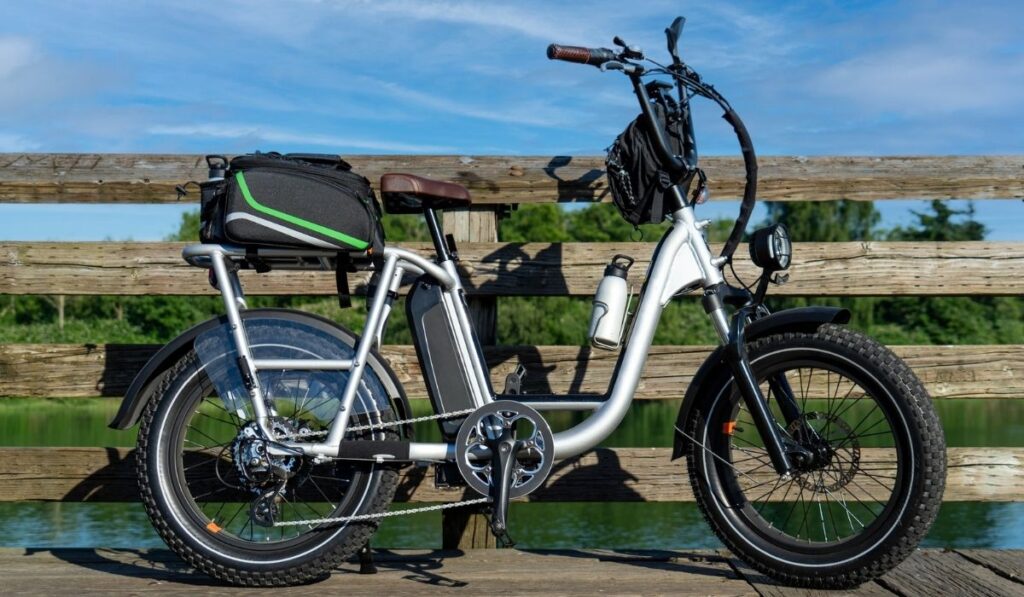
Are you looking for a fairly easy, low-maintenance ride? Well, then a cruiser might be perfect for you. These are better suited fuor casual riders, meaning you don’t need a whole lot of experience under your belt to enjoy them. Cruisers typically deal with flatter, milder terrain.
Established bike paths and roadways are the way to go with this bike type. Usually, cruisers will have a softer suspension system and fatter wheels for an easier ride.
Cruisers like this ECOTRIC E-Bike Cruiser (on Amazon) are super easy to ride and operate. The main goal of the cruiser is to make the riding experience as easy and comfortable as possible. For inexperienced riders, these are great starter bikes.
Mountain
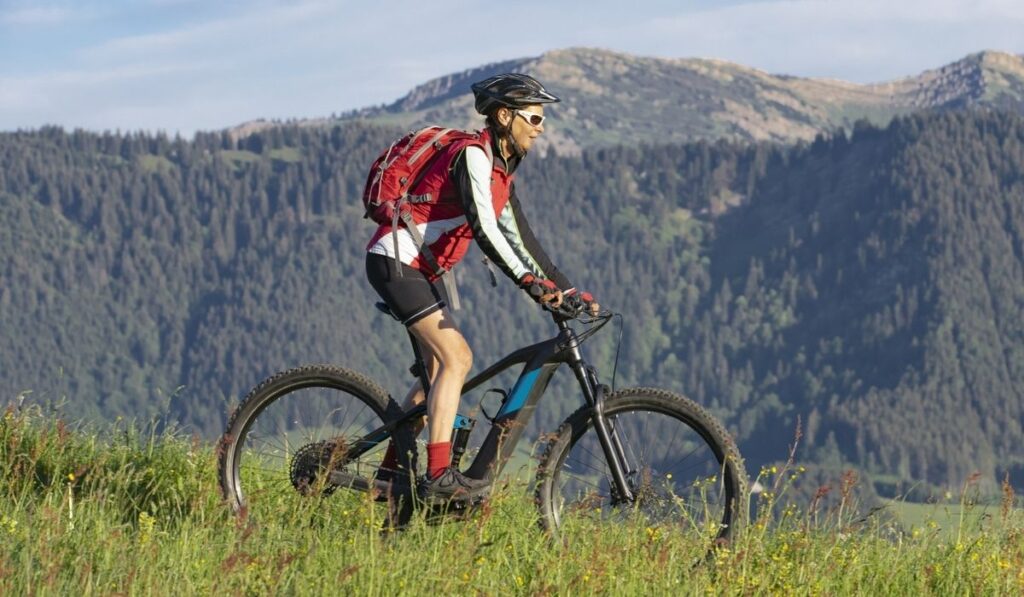
Even plenty of seasoned e-bike riders don’t know that you can get a mountain e-bike. Models like this Samebike Mountain E-Bike (on Amazon) come jam-packed with all kinds of neat features. These types of e-bikes are built to be pushed to the limit and can keep up with even the most adventurous thrill-seekers.
So if you’re looking to go up steep hills, travel a long way down nature trails, or ride in nasty weather, a mountain-style e-bike will be the best choice. Mountain e-bikes usually have fatter tires to deal with rugged terrain and steady handlebars that keep you centered and in control.
Commuter
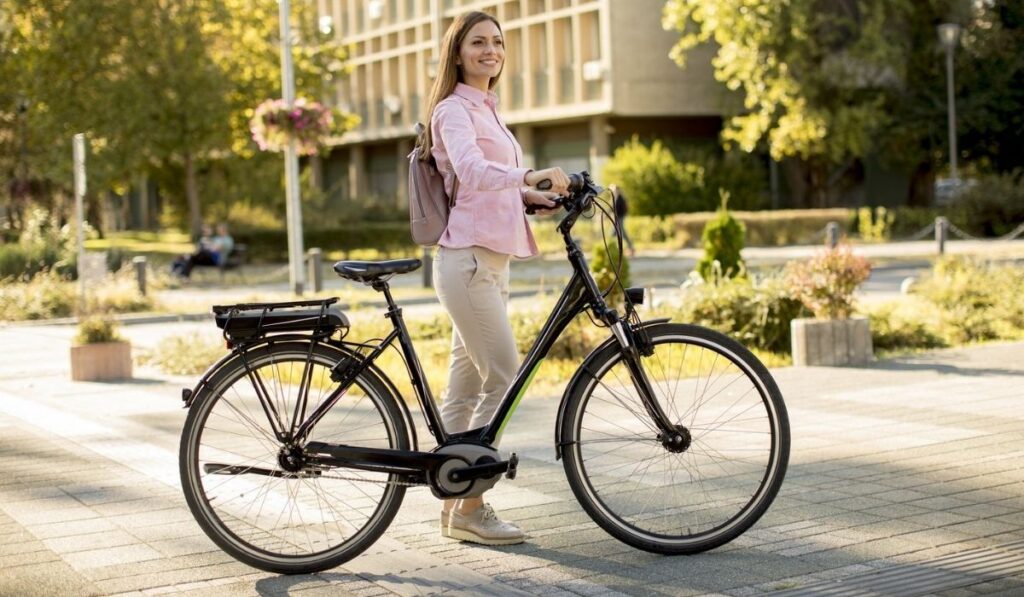
If you’re simply looking for an easier, more environmentally friendly way to get from A to B, then a commuter e-bike is probably the right choice. Bikes like this Vivi E-Bike (on Amazon) are great for running errands around town or getting to and from work without the need to burn excess fossil fuels.
Typically, these bikes are built for the long haul. They usually come equipped with features that will make your ride more comfortable, as well as safety measures that may not come standard on other e-bike models.
Road
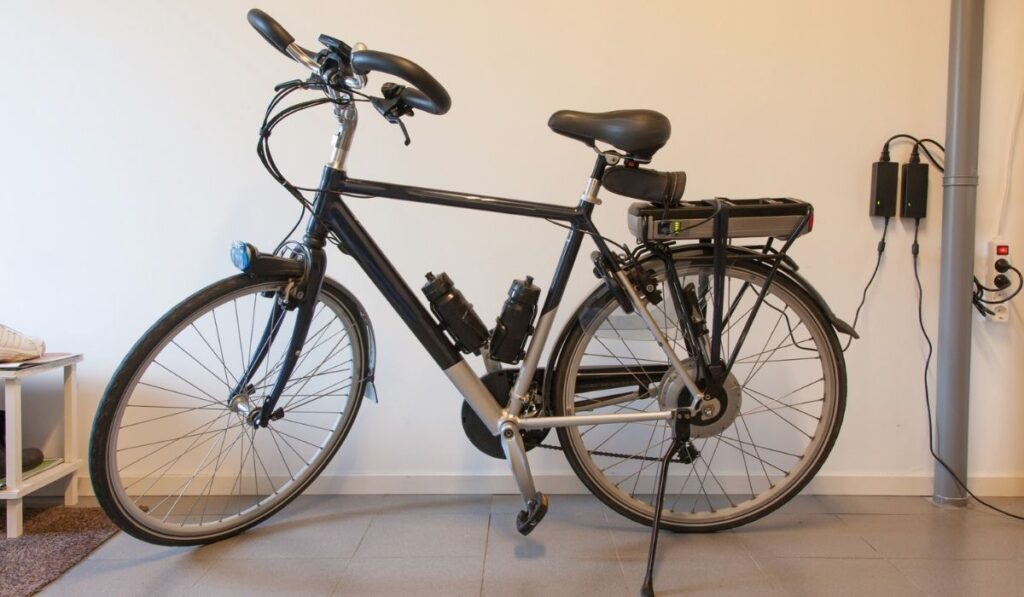
The last type of e-bike we’ll touch on is the road e-bike. These are similar to cruiser models in the sense that they are built for comfort. They are great for recreational riding on paved surfaces. Usually, you’ll find that these bikes have skinnier tires and drop-style handlebars to encourage faster riding.
Breaking Down E-Bikes Further by Features
So of course there’s a little more to a bike than just how you ride it. When it comes to e-bikes, in particular, you’re dealing with a lot of extra components. With things like motors, drivetrain additions, LCDs and other parts, e-bikes tend to be a bit more complicated than normal bikes.
Between the various e-bike types, there are different features you should be aware of too. Let’s break some down for you.
Motor Style
When it comes to your e-bike motor, expect more than one choice. While some are more popular than others, understanding which one is right for you can be a critical step in finding the perfect e-bike.
Generally, there are three different motor styles:
- Mid-drive
- Hub-style (Front and Rear)
- Friction (least popular)
Most e-bikes you see on the road today have hub-style motors. This is because they are the easiest to manage and install.
Moreover, rear-hub style setups offer the best option in terms of weight distribution, which is a big deal for a two-wheeled vehicle. Mid-drive motors tend to be a bit more complicated but can offer more in terms of protection for motor components.
Last is friction motors, which is when a motor uses a friction system to turn the wheel. You can find some e-bike kits that feature this style of motor, but it’s not very popular overall. Mainly because the friction mechanism tends to be a little unreliable when it gets wet. As you can imagine, this really limits when you can ride.
Batteries
Battery power is a huge part of what makes an e-bike run smoothly. In fact, your battery might be the most essential component of your bike. A low-quality battery can lead to poor performance, and it might mean you’ll be shopping for a replacement sooner rather than later.
In addition to battery quality, there is also the placement to consider. You see, the battery is heavy. Put it in the wrong place, and you can throw the bike’s weight off and lead to an uncomfortable ride. Some bikes will have the battery mounted to the frame, or mounted beneath the seat like this Paselec Electric Bike (on Amazon). You can even find rear-mounted models.
Additionally, battery power relates to range. Opting for a bigger battery may get you a few extra miles out of a charge, but keep in mind that it will also add weight.
We also have a few related article diving into whether you can add a second battery to your bike, and if you can add a bigger battery to your bike. It may make sense to buy an e-bike you’re not 100% sure about, then figuring out if you really need more range and going from there.
How To Choose the Right E-Bike for You?
Now that you’re sufficiently loaded up with all the essential e-bike info you could ever want, how do you know which model is right for you? As we’ve learned, there is a whole lot out there in the world of e-bikes. Below we’ve got some quick tips you can consider to find your perfect e-bike:
- How do you intend to ride your bike? — Looking to hit the trails every weekend? More interested in riding to work? Asking these questions can really help you hone in on the right bike type.
- Speed — We all know some speed demons. If you’re looking for the extra juice, make sure to add that to your e-bike wishlist.
- Budget — E-bikes can get expensive. Matching your bike to your budget means you won’t be breaking the bank when you go to buy.
- Terrain — Not everyone has pretty bike lanes to use. If you are in a rural area or intend to use outdoor trails, maybe a mountain bike-style e-bike would be more appropriate.
- Experience level — A road bike or cruiser will be easier to deal with generally for beginners, while mountain bikes and commuters have extra bells and whistles that make things more complicated.
Overall, thinking about how you want to use your bike is really the best strategy. No one knows that better than you. If you’re still trying to decide between models, your local bike shop may have the experience and knowledge you need to find the right answer.
